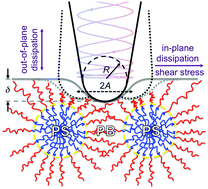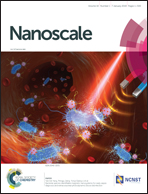Sensing in-plane nanomechanical surface and sub-surface properties of polymers: local shear stress as function of the indentation depth
Abstract
Dynamic force microscopy (DFM) is an excellent tool for the study of the compositional and nanomechanical properties of polymers that exploits the flexural eigenmodes of a cantilever comprising a sharp tip vibrating perpendicular to the sample surface. However, the in-plane nanomechanical properties of a specimen cannot be detected by this technique. Here, a bimodal approach was developed where flexural and torsional eigenmodes are driven simultaneously. The corresponding vibrational amplitude and phase shift of the vertical tip motion were utilized for topographical feedback and out-of-plane dissipative interaction acquisition, respectively, whereas the frequency shift and the drive amplitude of the lateral tip motion mapped the in-plane conservative and dissipative interactions of two heterogeneous polymers: an elastomeric polypropylene (ePP) and a polystyrene-block-polybutadiene diblock copolymer (SB). The shear stress at different sub-surface levels revealed an amorphous cover layer as well as a “slipping” plane on the ePP crystallites. The imaging of SB supported by dynamic force spectroscopy experiments showed that SB exhibits considerably different in- and out-of-plane nanomechanical properties at certain areas due to the complex polymer conformation of this diblock copolymer accompanied by inter- and intramolecular interactions that give rise to its viscoelastic behavior.



 Please wait while we load your content...
Please wait while we load your content...